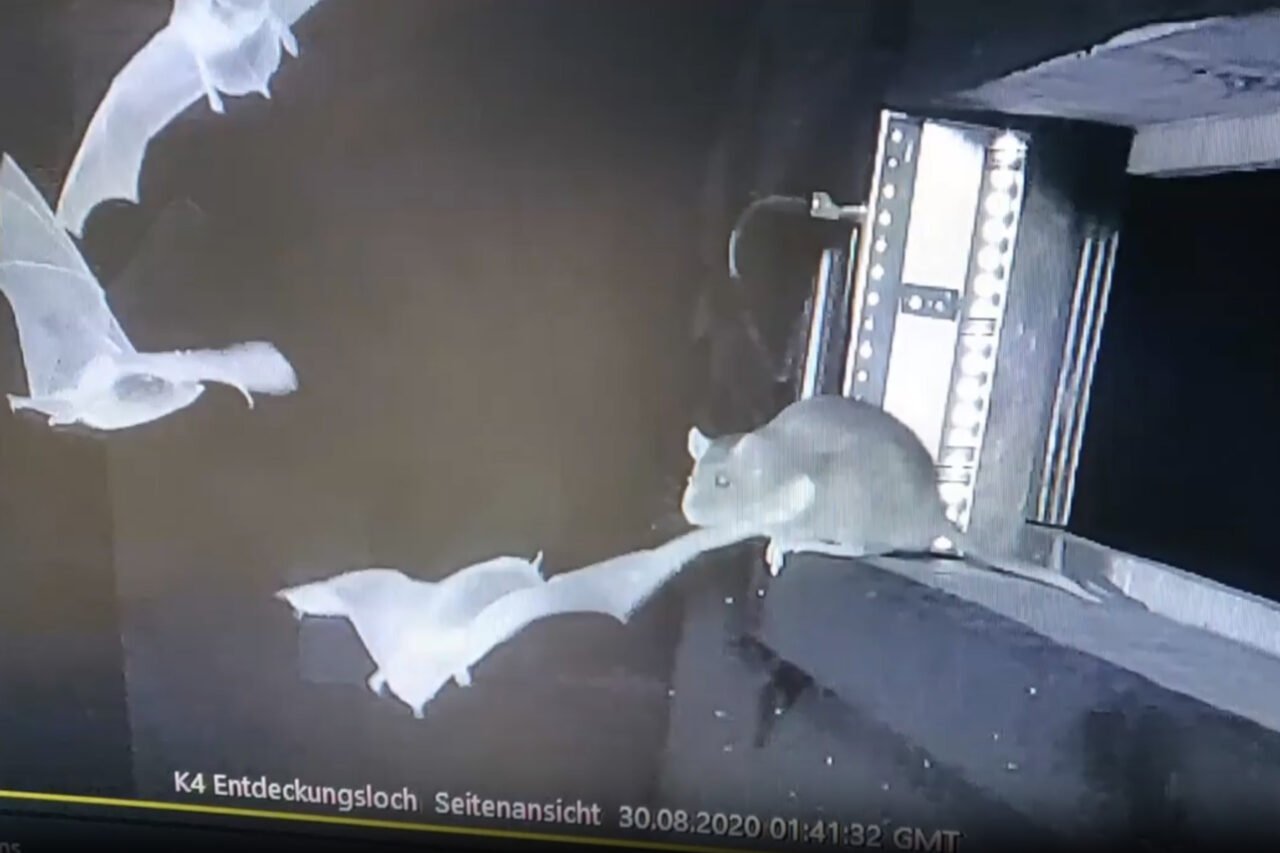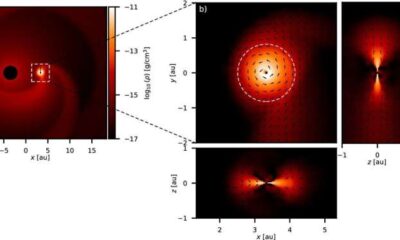Science
Scientists Alarmed as Rats Target Bats in Germany’s Winter Caves

Researchers in Germany have uncovered a disturbing trend: brown rats, specifically Rattus norvegicus, are preying on local bat species in their winter hibernation sites. Documented in a recent study published in Global Ecology and Conservation, this predation raises significant concerns about the safety of bat populations, particularly the Myotis daubentonii and Myotis nattereri species.
The investigation, which spanned from 2020 to 2024, utilized infrared surveillance cameras to track rat behavior near the Segeberger Kalkberg, one of two caves that serve as urban bat habitats in northern Germany. Initial observations revealed a shocking number of predation attempts: 30 in five weeks, resulting in 13 confirmed kills. Researchers also discovered remains of at least 52 bats, indicating a troubling pattern of feeding behavior among the rats.
Systematic Hunting Strategies
The footage collected during the study showed that the rats employ two distinct hunting methods. They either intercept bats midair or ambush them once they have landed. In both instances, the rats position themselves strategically to launch a quick attack, targeting the bats with a decisive bite. If the first strike is not fatal, the rats use their forelegs to immobilize the bats before delivering a second bite.
Additional investigations conducted between 2021 and 2024 provided further evidence of this predation. A cache of bat carcasses was found near the Lüneburger Kalkberg, resembling the arrangement at Segeberger Kalkberg. This similarity suggests that the brown rats are systematically targeting bat populations across multiple locations.
Implications for Ecosystems and Human Health
While brown rats are not natural predators of bats, their opportunistic feeding habits pose a significant threat. The study noted that brown rats have demonstrated a flexible diet, consuming a wide range of food sources. For instance, populations near fish markets in Japan have diets composed of 86% fish. This adaptability raises concerns that bats could comprise a considerable portion of the rats’ diet, leading to potential declines in bat populations.
Bats play crucial roles in ecosystems, providing services such as insect suppression, seed dispersal, and pollination. The decline of these species could have far-reaching ecological consequences. Moreover, both bats and rats are known carriers of various pathogens, including coronaviruses. Although the study did not specifically address pathogen transmission, the researchers highlighted the risk of potential pathogen exchanges between these two wildlife reservoirs.
The findings of this research underscore the complex interactions within ecosystems and the unforeseen challenges that arise from human-altered environments. As scientists continue to monitor these interactions, the implications for both wildlife conservation and public health remain significant.
-

 Science2 months ago
Science2 months agoOhio State Study Uncovers Brain Connectivity and Function Links
-

 Politics2 months ago
Politics2 months agoHamas Chief Stresses Disarmament Tied to Occupation’s End
-

 Science1 month ago
Science1 month agoUniversity of Hawaiʻi Joins $25.6M AI Project for Disaster Monitoring
-

 Science4 weeks ago
Science4 weeks agoALMA Discovers Companion Orbiting Giant Star π 1 Gruis
-

 Entertainment2 months ago
Entertainment2 months agoMegan Thee Stallion Exposes Alleged Online Attack by Bots
-

 Science2 months ago
Science2 months agoResearchers Challenge 200-Year-Old Physics Principle with Atomic Engines
-

 Entertainment2 months ago
Entertainment2 months agoPaloma Elsesser Shines at LA Event with Iconic Slicked-Back Bun
-

 World1 month ago
World1 month agoFDA Unveils Plan to Cut Drug Prices and Boost Biosimilars
-

 Business2 months ago
Business2 months agoMotley Fool Wealth Management Reduces Medtronic Holdings by 14.7%
-

 Science2 months ago
Science2 months agoInnovator Captures Light at 2 Billion Frames Per Second
-

 Top Stories2 months ago
Top Stories2 months agoFederal Agents Detain Driver in Addison; Protests Erupt Immediately
-

 Entertainment1 month ago
Entertainment1 month agoBeloved Artist and Community Leader Gloria Rosencrants Passes Away









